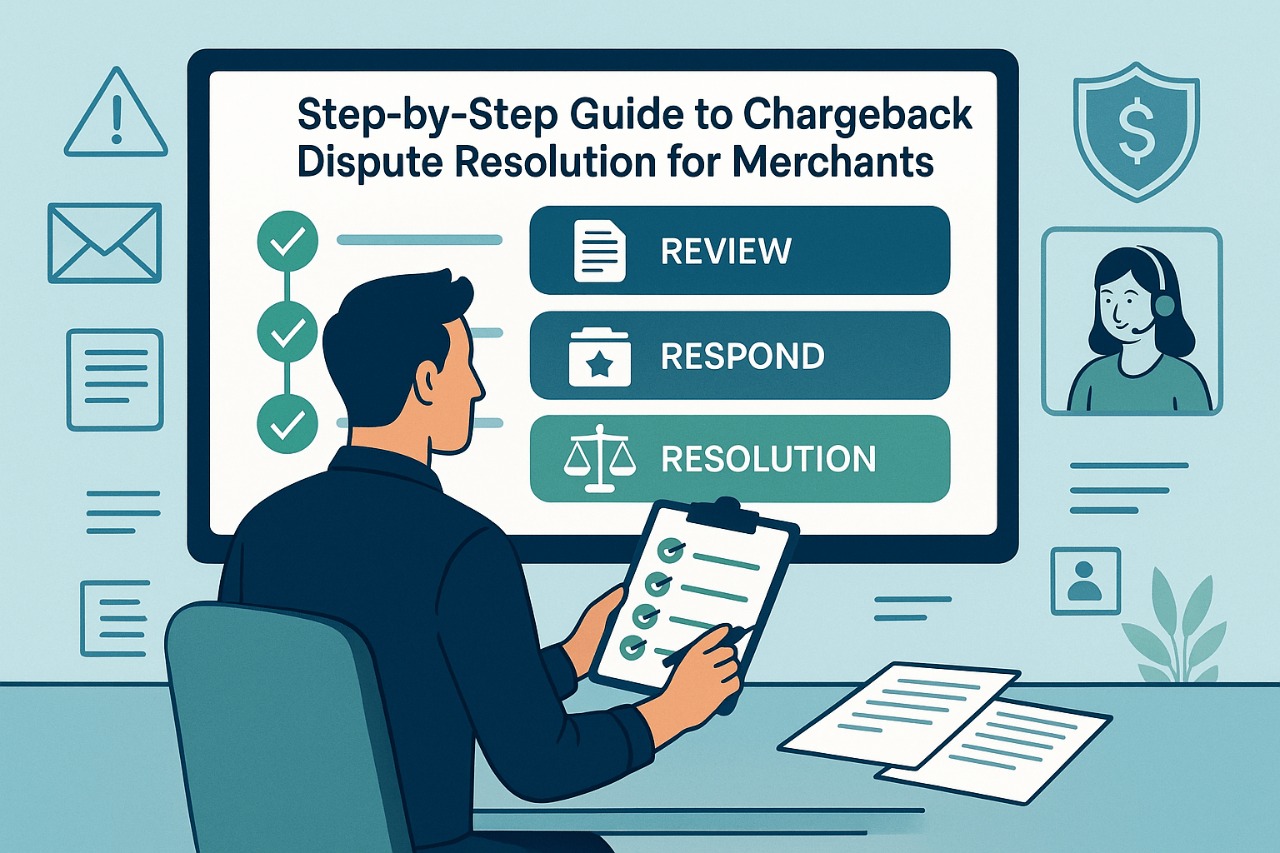disputeresponse Jun/ 26/ 2025 | 0
Introduction
Chargebacks can be a significant challenge for online businesses, leading to financial losses and potential damage to your merchant account. In this guide, we’ll walk you through the step-by-step process of chargeback dispute resolution, highlighting best practices and effective strategies to prevent and manage chargebacks. Understanding this process is crucial for minimizing losses and protecting your business’s reputation.
What Is a Chargeback?
A chargeback occurs when a customer disputes a transaction, asking the bank to reverse the charge. This can happen for various reasons, such as fraud, dissatisfaction with a product, or a misunderstanding of the transaction. As a merchant, chargebacks can impact your bottom line and lead to penalties from payment processors.
Step 1: Understanding Chargeback Reasons
Before disputing a chargeback, it’s vital to understand why it was initiated. Some common reasons for chargebacks include:
- Fraudulent Transactions: Customers report that their credit card was used without their consent.
- Product or Service Issues: A customer may dispute a charge due to dissatisfaction with the product or service received.
- Technical Errors: Errors in the transaction process, such as duplicate charges or incorrect amounts.
Step 2: Reviewing the Chargeback Notice
When a chargeback is filed, you’ll receive a chargeback notice from your payment processor or bank. This notice will include essential details such as the reason for the chargeback, the transaction date, and the disputed amount. Take time to review this document carefully before moving to the next step.
Step 3: Collecting Evidence for the Dispute
To resolve a chargeback, you need to present evidence that the transaction was legitimate. This evidence may include:
- Proof of delivery or service: Shipping tracking numbers, delivery confirmation, or a signed receipt.
- Transaction details: A copy of the transaction invoice or order confirmation.
- Communication records: Correspondence with the customer, including email or chat logs, showing they received the product or service as expected.
Step 4: Responding to the Chargeback
Once you have gathered all the necessary evidence, submit your response to the chargeback to your payment processor or bank. Ensure your response is timely, as there’s usually a limited period to challenge a chargeback. Your response should be clear and well-organized to increase the chances of winning the dispute.
Step 5: Monitoring the Outcome
After submitting your evidence, your payment processor will review the case and make a decision. If the chargeback is reversed in your favor, you’ll retain the disputed funds. However, if the chargeback is upheld, you may need to pay the amount and possibly face additional fees.
Step 6: Learn from the Experience and Prevent Future Chargebacks
The final step is learning from the chargeback and implementing measures to prevent future occurrences. Consider taking the following actions:
- Improve your refund and return policies.
- Use fraud prevention tools like AVS and CVV checks.
- Enhance communication with customers to resolve issues proactively.
Conclusion
Chargeback dispute resolution is a critical process for e-commerce merchants looking to protect their revenue and reputation. By following these steps and utilizing the right tools, you can effectively manage chargebacks and reduce the likelihood of future disputes. Stay vigilant, keep your documentation organized, and ensure your business is prepared to handle any chargeback that may arise.
Call to Action:
Are you dealing with a chargeback? Contact Dispute Response today to learn more about our chargeback management services and how we can help you resolve disputes effectively.
